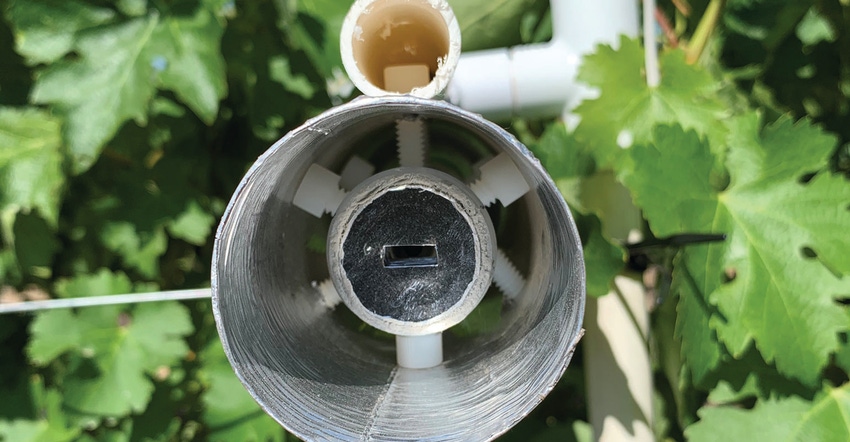
With the simple acknowledgment that we “need to prepare for the potential of continued drought conditions in future growing seasons,” Washington State University viticulturist Marcus Keller is forging ahead.
Keller, author of the textbook, The Science of Grapevines: Anatomy and Physiology, counsels growers to not be afraid of things like heat and water stress on the growing of grapes, be they for wine, table, or raisins.
“They’re actually quite resilient to these kinds of stresses,” he said. “In their countries of origin, grapevines have been dealing with water stress for years and they’re good at it --- although there is a limit to what they can cope with.”
As the Chateau Ste. Michelle Distinguished Professor of Viticulture, he has worked vineyards in his native Switzerland and conducted research in Australia and America. “I take a global perspective in viewing how grapevines are built and how they work,” he said.
Among those studies is an on-going deficit irrigation trial involving Washington-grown Chardonnay and Riesling grapes, looking at the effects of varied timing and quantities of water on fruit quality, yield, and the impact on wine flavor.
“We’re exploring wine flavors modified by irrigation practices, helping the industry modify its vineyard water scheduling and how deficit irrigation will impact white wine quality,” he said. “Red grape water reduction is a well-studied subject, but white grapes have been somewhat neglected and may sometimes be under-irrigated.”
In many European countries, irrigation during the grape ripening phase is prohibited by law for fear the extra water taken up by grapes might dilute quality. There is little in the way of scientific evidence concerning late-season water uptake being detrimental to fruit quality.
“We are experimenting with techniques to determine how water moves into and out of grape berries and whether or not that movement leads to changes in berry size or solute concentration.”
Too much Southern exposure
Most recently, experiments have focused on the canopy which can reach temperatures more than 120 degrees, frying the fruit. “Get away from excessive sun Southern exposure,” he advises, which is contrary to advice in the late 1900s that fruit more exposed to sunlight would produce higher quality grapes.
“Now we’re telling growers, although it may sound counter-intuitive, to back off that a bit. If you remove leaves, a common practice in wine grapes, don’t pull them off to directly expose the grapes. It’s like humans spending the winter indoors away from the sun, then going outdoors and getting burned because their skin is not adapted.
“We’ve tested creating a kind of an early season umbrella which allows more exposure after fruit set as we pull some of the shoots along the wires, letting them hang over the fruit to create a bit of protection. It’s almost the opposite of what has been taught previously, but that’s what we’re trying this year and awaiting lab results as to its success.”
Also being studied is water stress. “Winemakers worry that vines shouldn’t be stressed too much in the early season and during ripening, but based on our results, it’s exactly the opposite if you want to maximize quality, especially for red grapes — exactly the opposite of what Europeans have been preaching for centuries. That’s for reds. For whites, less water stress is better because drought is not a good thing for white wines as they become more bitter.”
Keller’s work with pre-harvest irrigation is on-going along with study of a phenomenon plaguing growers up and down western North America -— berry shrivel — especially of Cabernet Sauvignon and Sauvignon blanc.
Read more about:
GrapesAbout the Author(s)
You May Also Like




